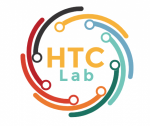In two studies, we evaluated the trust and usefulness of automated compared to manual parking using an experimental paradigm and by surveying owners of vehicles with automated parking features. In Study 1, we compared participants’ ability to manually park a Tesla Model X and use the Autopark feature to complete perpendicular and parallel parking maneuvers. We investigated differences in parking success and duration, intervention behavior, self-reported levels of trust in and workload associated with the automation, as well as eye and head movements related to monitoring the automation. We found higher levels of trust in the automated parallel parking maneuvers compared to perpendicular parking. The Tesla’s automated perpendicular parking was found to be less efficient than manually executing this maneuver. Study 2 investigated the frequency with which owners of vehicles with automated parking features used those features and probed why they chose not to use them. Vehicle owners reported using their vehicle’s autonomous parking features in ways consistent with the empirical findings from Study 1: higher usage rates of autonomous parallel parking. The results from both studies revealed that 1) automated parking is error-prone, 2) drivers nonetheless have calibrated trust in the automated parking system, and 3) the benefits of automated parallel parking surpass those of automated perpendicular parking with the current state of the technology.
Latest posts by Ryan Watkins (see all)
- Needed in Empirical Social Science: Numbers - June 23, 2024
- Investigating the Role of Explainability and AI Literacy in User Compliance - June 20, 2024
- Philosophical debate on use of AI in science - June 9, 2024
